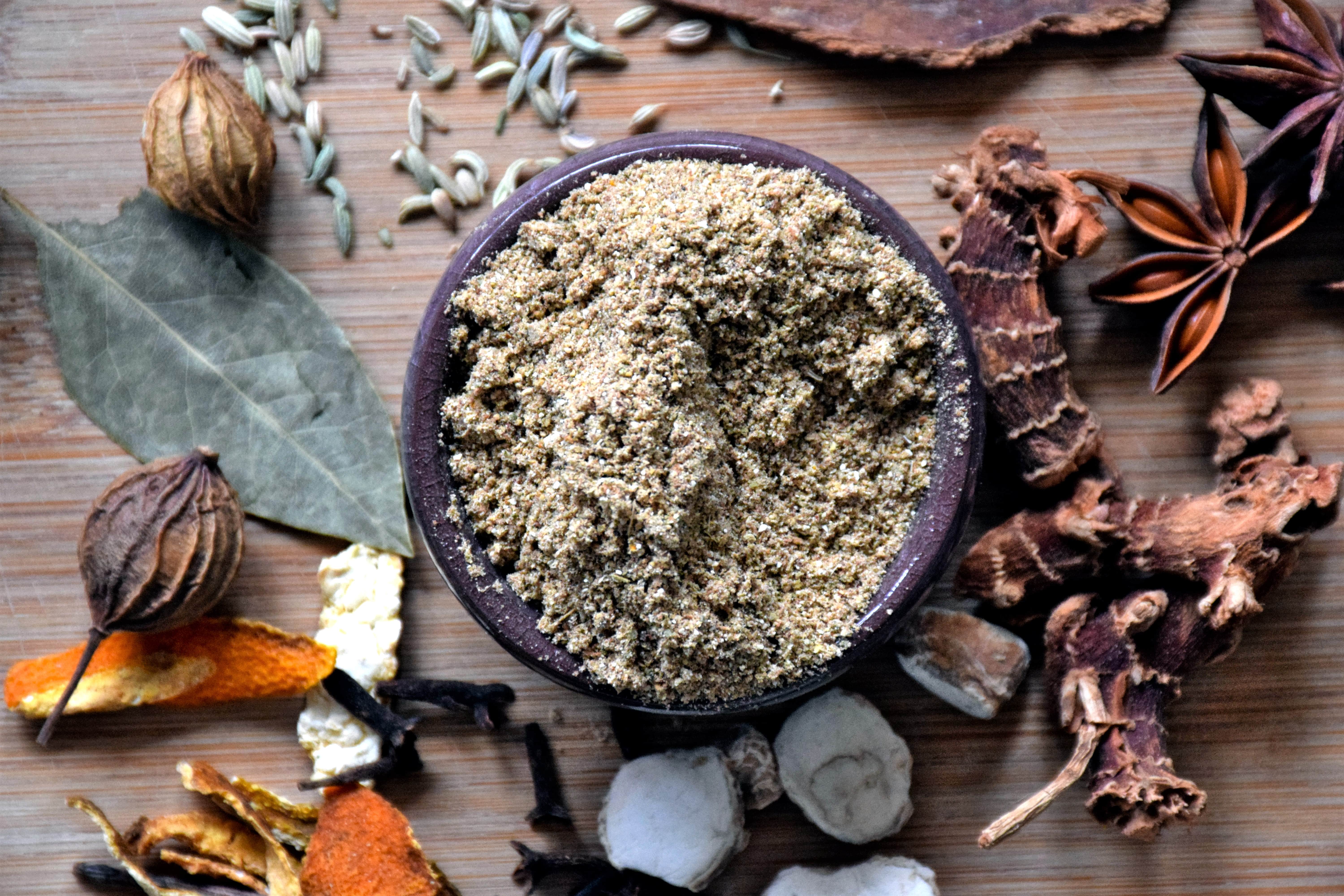Chinese Thirteen Spice Powder
Shi San Xiang Fen (十三香粉)
Chinese Thirteen Spice Powder is one of the most intricate and aromatic spice blends you can add to your culinary toolkit—just a small amount can dramatically elevate the fragrance and depth of any dish.
The specific combination of the “13 spices” is famously elusive, as this blend is one of the most diverse in Chinese cooking. There is no universally accepted formula; different regions, families, and chefs use their own combinations. However, most versions begin with a Five-Spice foundation.
A typical Five Spice base includes Star Anise, Cinnamon, Cloves, Fennel Seeds, and Sichuan Pepper. That said, these ingredients are flexible and often substituted depending on the flavor profile desired. In the recipe that follows, certain spices are slightly increased to help them stand out amid the complexity. Nutmeg can replace Cloves for a warmer, rounder aroma. Long Pepper—long, slender pods related to black pepper—or White Pepper may be used instead of Sichuan Pepper if you want to avoid the tingling ma (麻) sensation.
Beyond the Five-Spice base, Chinese Thirteen Spice Powder typically incorporates an assortment of dried aromatic roots, many related to ginger. These roots contribute earthy, spicy undertones and are largely interchangeable depending on what you have on hand. The blend is then rounded out with peels, pods, and leaves, which contribute fruity and floral notes—often from cardamom-related pods. These components introduce slight bitterness and acidity, which is why Chinese Thirteen Spice Powder is traditionally used in Stewed and Red Braised Dishes (烧菜品和红烧菜品). The natural sweetness, saltiness, and umami of these dishes balance any bitterness, allowing the aromatic layers to shine.
When preparing the spices, toast and grind them in small groups according to type. This offers better temperature control, reduces the chance of burning, and ensures a more consistent grind. As always, it is better to under-toast than to scorch the spices—low heat and patience will give you the best results. For even more control, you may toast the spices in a low-temperature oven. The oven method is slower and not traditional, but it achieves the same aromatic effect.
Ingredients
Chinese Five Spice Base
5 whole Star Anise
2 sticks of Cinnamon
1 tsp. of whole Cloves OR 3 Nutmeg
1/8 cup Fennel Seeds
2 tsp. Sichuan Pepper OR 3 Long Peppers (毕拨Indian Long Pepper; no sizzling sensation) OR 1 tsp. whole White Peppercorns
Aromatic Roots
2 Tbsp. Sand Ginger (山奈)
2 4-inch-long strips of dried Galangal (良姜)
1/8 cup of Spikenard Root (甘松; spicy-earthy flavor) OR 1/8 cup of Dried Ginger Pieces (spicy-earthy flavor) OR 2 Tbsp. of Costus Root (木香; strong flavor) OR 1/8 cup of Angelica Root (earthy flavor)
Peels, Pods, and Leaves
2 Rose Apples (香果; fruity slightly floral flavor) OR 2 – 4 dried Tangerine Peels (citrusy flavor)
10 Bay Leaves
2 Amomum villosum Pods (砂仁)
10 White Cardamom Pods (白蔻)
3 Caokou (草寇)
Seeds
1 Tbsp. Sesame Seeds (Optional)
Directions
1.) Place all of the Five Spice Base (Star Anise, Cinnamon, Cloves, Fennel Seeds, and Sichuan Pepper) into a wok or skillet and heat on low gently tossing occasionally until the spices are fragrant.
(USE your nose! DO NOT burn the spices. The purpose of toasting is just to deepen the flavor slightly and not to cook the spices).
2.) Once smelling nice, pour the Five Spice Base ingredients into a blender or spice grinder and blend until a fine powder is achieved.
(Optionally, you can sift the ground spices through a wire strainer to remove any large, hard pieces that wouldn't blend and to achieve a finer powder. But this is unnecessary as long as the powder is fine enough and won't affect the flavor. It's merely aesthetic, but I'd recommend it).
3.) Pour the Five Spice Base powder into a large bowl.
4.) Toast the Aromatic Roots (Sand Ginger, Galangal, and Spikenard) in a wok on low heat, tossing often, until fragrant. Pour these spices into a blender and blend until an ultra-fine powder is achieved. Pour these spices into the bowl with the Five Spice Base.
5.) Smash all of the pods with the side of a heavy cleaver. Then, toast the Peels, Pods, and Leaves (Rose Apples, Bay Leaves, Amomum Pods, White Cardamum, and Caokou) in a wok on low heat, tossing often, until fragrant. Pour these spices into a blender and blend until an ultra-fine powder is achieved. Pour the spices into the bowl with the other powders.
(I highly recommend passing everything through a mesh sieve to achieve a finer powder. Any remaining pieces can be returned to the blender, blended, and once more passed through the sieve).
6.) If using, also toast the Sesame Seeds in a wok on low heat, tossing often, until fragrant. Pour them into a blender and roughly blend just enough to coarsely chop them. Pour them into the bowl with the seasonings.
(The Sesame Seeds can be coarsely ground, finely ground, or left whole, depending on one’s preference. These are a very optional ingredient which are not always present in Chinese Thirteen Spice, but do pair well with it).
7.) Mix everything in the bowl with a whisk until mixed completely. Store the Chinese Thirteen Spice Powder in an airtight jar. The Chinese Thirteen Spice should keep its flavor for about two months, but is best within the first month of making. This recipe makes about 1 1/4 – 1 1/3 cup of seasoning. Chinese Thirteen Spice Powder has a slight bitterness that needs to be offset by sweetness, saltiness, and umami, so keep this in mind when using it in various dishes.
Contribute to Sichuan Soul
Sichuan Soul is funded in part thanks to generous contributions by fans like you! Your donations supply Sichuan Soul with the funding needed to provide quality recipes and photos. All donations are processed safely and securely through PayPal. You can donate any amount using the 'Donate' button below. Thank you for your support.

Comments
Post a Comment